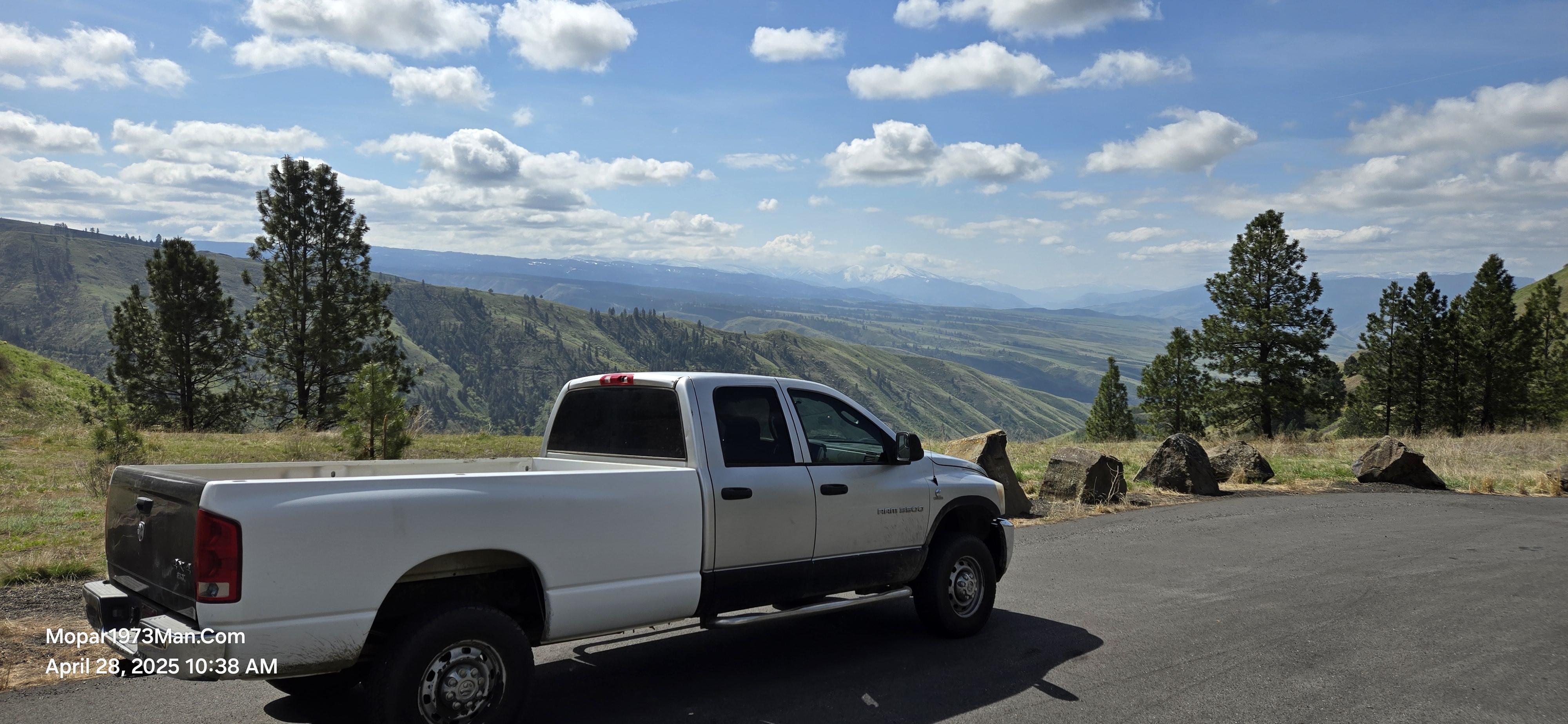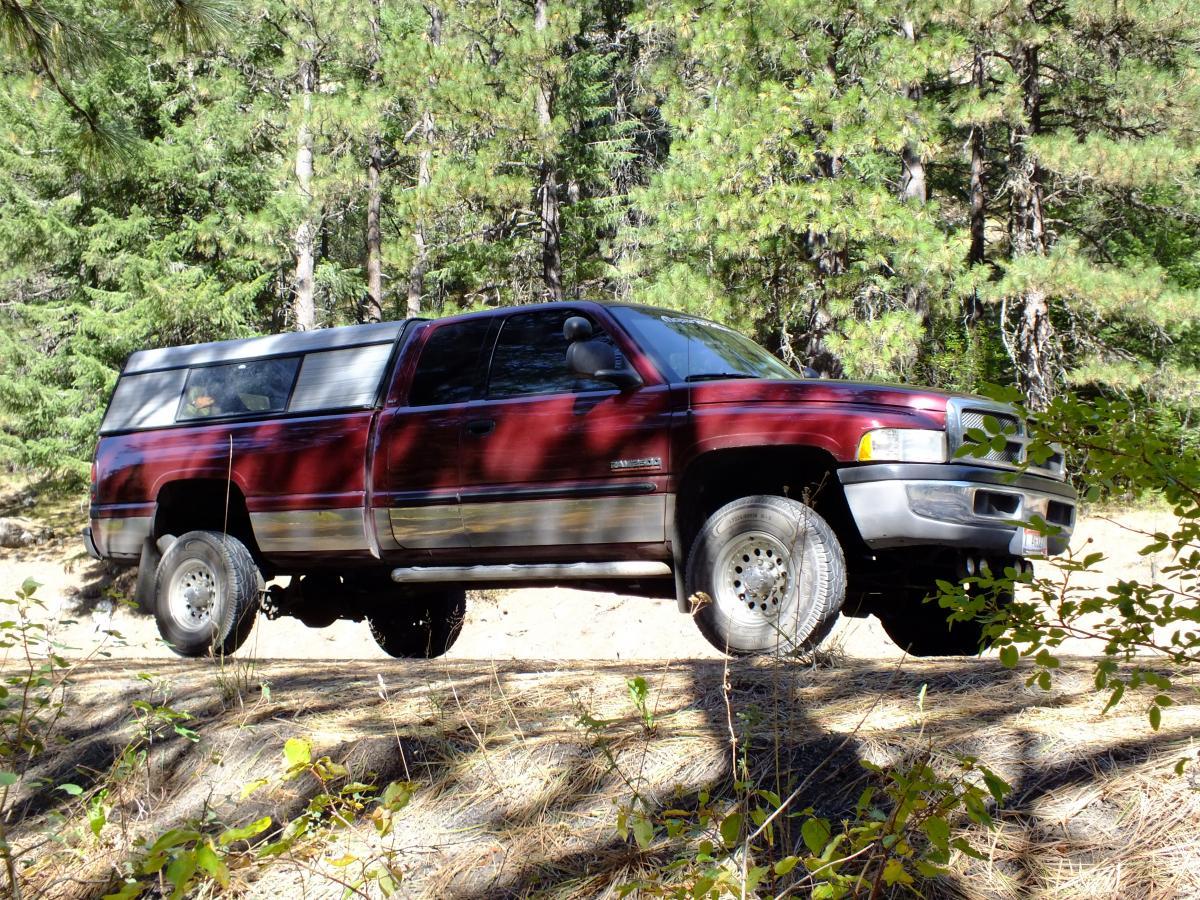
Everything posted by Mopar1973Man
-
Awesome deal on firewood
I've got Red Fir in the middle of my pile this is reserve wood for the just in case. As for going through it doesn't bother me as long as I'm not on the roof stuff a chimney brush in the middle of the winter. Red Fir is a higher BTU wood but way too hot for the hot most of the time. So you end up choking the air down till its smoldering and condensing tar in the chimney. This why a lighter wood is desired for the early fall of the year is lower in BTU's it will tolerate being choked down without taring the stack up. Like a diesel if you chimney is smoking your not burning efficiently need to turn the air up just a bit more till it stops smoking. Now here you are again with high BTU firewood and 80-85*F inside and miserable. This is fine in the middle of winter when the minus numbers come load it up with the high BTU wood (red fir) and turn it up.
-
Awesome deal on firewood
Neighbor down the road from me hooked me up with a gent in New Meadows, ID that sells salvaged firewood from logging operations. The load above is all spruce and it sold for $75 a cord and there is roughly 2 cords on the trailer. Nice. I'm planning on doing it again!
-
Doesn't take much to effect 47re
Now cover the terminal and light film of engine oil and never worry about cleaning the terminals again. In 12 years of ownership of my truck I've never clean the terminals of the battery cables because they have never corroded. I would still test the AC noise levels to double check to be safe...
-
A/C is dead but odd symptoms?
I would gladly do the work on the A/C system. But I'm sure your no where near me though... If there is less than 25 PSI lo side the system will not start. Now the lower the lo side pressure the colder it gets so if you jumped the low pressure switch to start it it will most likely freeze up. R134a should be about 35-40 PSI on the lo side and about 225-275 PSI on the hi side. Kind of hard to have a system pumping without pressure on either hi or lo side.
-
Ph monitoring of coolant?
I typically run about 30k miles and change the coolant and not look back.
-
gosh dabnabbit.. can't we have a normal 'fall'?
Hmmm... I'm right on track here for Idaho.
-
Watch Yer Spare Tire Winch
If the spare tire is installed correctly it shouldn't move at all. So how would the cable flex to break? (Food for thought?)
-
Cleaning and maintaining electrical connections
I use none of the above. Just plain ol' engine oil. Never had a bad battery connection and no corrosion issues ever! Ask yourself a question? What is the only matterials that sulphuric acid can be contained in without eating the container? Answer is plastic and glass. Plastic is made from what? Oil... Grease works but if you ever lean over a battery with your arm or your shirt not you covered in grease. That red stuff stains you clothing quick. Most all rig I work on I will just power wash the battery off and the lightly oil the battery terminals. After a day of driving the oil melts away and just a thin residue is left behind. Hold down bolts and battery tray hardware don't rot either. KISS - Keep It Simple Stupid...
-
Can't believe I did this
It comes just barely under the back of the cab. At least on my 1996 Dodge Ram 1500 short box. Most airbag system basically are trigger by a gold plated ball bearing stuck to a magnet so if the impact force is strong enough to separate the steel ball from the magnet it deploys the airbags. There is many other systems used out there I've seen but the most common is the gold plated steel ball stuck to a magnet. Now once again depending on the trigger method it might be really easy to trigger and it might be hard.
-
Watch Yer Spare Tire Winch
I heard these stories too but I tend to pull my spare down to inspect it now and then for dry rot, cracks, damage, etc. I tend to lube up the cable and winch with dry silicone spray.
-
Freeze out plugs
Wow! You got a serious rust problem...
-
Can't believe I did this
Good point...
-
Winter Storage - Fuel?
Sealed container yes. Open/vented container I won't give it too much after about 2 years. Around here gasoline is rather pitiful now with all the ethanol added. Like with all the fire trucks the pump engine that run on gas tend to get rather foul after about 2 years. We typically dump the tanks or attempt to consume it during trainings.
-
continious tire shop trouble
I've got a wonderful tire shop I've done business with for many many years. Originally it was a Big O Tire shop and now it changed names to Tire Factory. Same owner and same guys in the shop. They love it when I bring the Diesel in they always asking about anything new added to the truck, hows it running, etc. Always A+ service. Even when mistakes happen they make it right and repair the problem pronto. Good shops do exist just got to look hard for them.
-
Winter Storage - Fuel?
I store fuel on the property in 55 gallon drums. As long as the fuel is stored in a air tight container the fuel will last nearly forever. Like my barrel of gasoline was over 7 years old when I started using it. Absolutely nothing wrong with it. As for storing fuel in the tanks or bed tanks most of then are vented so with diesel typically it will go a long ways but gasoline won't last very long at all in a vented tank.
-
Can't believe I did this
I really can't see anything wrong with the truck at that angle. The tank should be rearward from the point of contact so I don't think anything is damaged in the tank. I'd be looking at the transfer case and transmission myself because of the point of contact. I would for the sake of knowing I would check the error codes something might of triggered it to shut down like low oil pressure? The error code might be there to give clues to you.
-
Can't believe I did this
I would bet on being low on fuel. I've been in steep country myself that shouldn't prevent starting. I would check fuel pressure...
-
Quadzilla removal
All I can say is check EBay and Craigslist... Quadzilla is no longer produced.
-
Some pretty pics of my truck :~)
-
Edge Comp Setting for Towing?
With my old RV275's I ran 5x5 even towing. But with my +50HP Vulcan Performance injectors I got to back down to 5x3 to control smoke nothing more. EGT's are still very controllable, very capable of climbing a 6-7% grade in 4th gear and holding 53-55 MPH no a problem. So far for my fuel logs I'm pulling 11-14 MPG on the highest setting (Level 5).
-
96 Dodge Ram 1500 & BigTex 70TV hauling firewood
Not hard at all I did it for a 1 year and was making serious money with another gent. My problem was my body wouldn't hold up to the abuse.
-
Truck crane?
That hoist that is down at the shop is really easy to move around really. Lindy has been trying to sell it for quite some time now. I can see the idea of building a stinker for that and slip the base into the hitch. Place the hoist in the base... Now pickup your propane tanks or anything heavy and place it in the truck. Good idea Will !!!
-
Grid power... questions!
I love it better yet when I'm looking at my inverter down stairs and the "Input Amps" shows a negative number even 1-5 amps. I love selling my excess power. But I know my loads will consume it later on. Nothing new... As for power production I think its great they are looking at alternate green energy but some of the laws and such are BS though.
-
Truck crane?
Might check on this... http://forum.mopar1973man.com/index.php?/classifieds/item/9-truck-hoist/
-
EGT Probe Locations
Well you could drill and tap 3 probes in the manifold but I would space them out properly. I would most likely try to stay in the 4, 5, 6 port and start close to the mouth of the turbo and work my way back up the 4, 5, 6 port. Can't see using a switch because they still need live data to function.




